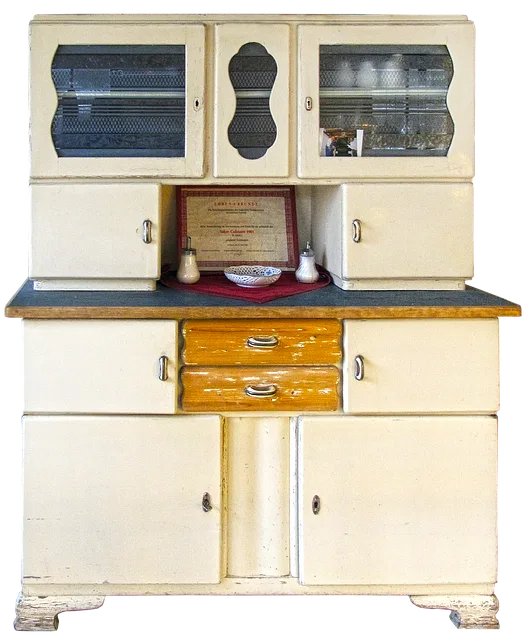Typically, standard kitchen cabinets can hold anywhere from 100 to 300 pounds per shelf. That’s a pretty wide range, right? The actual weight capacity depends on several factors, including the material of the cabinets, the type of shelving, and how well they’re installed. For instance, solid wood cabinets tend to be sturdier than particleboard ones. If you’ve got adjustable shelves, keep in mind that they might not be able to bear as much weight as fixed shelves.
Now, let’s talk about installation. If your cabinets are securely anchored to the wall and the shelves are properly supported, they can handle a lot more than if they’re just hanging there like a bad painting. Think of it like a bridge: a well-constructed bridge can hold heavy traffic, while a rickety one might collapse under the weight of a bicycle.
So, what does this mean for you? If you’re planning to store heavy items, like cast iron skillets or bulk food supplies, it’s wise to distribute the weight evenly across the shelves. And remember, it’s always better to err on the side of caution. If you’re unsure, consult with a professional to ensure your cabinets can handle the load. After all, nobody wants a surprise avalanche of kitchenware!
The Weight Debate: How Much Can Your Kitchen Cabinets Really Handle?
Most standard kitchen cabinets are designed to hold around 100 pounds per shelf. That’s a decent amount, but if you’re the type who loves to stock up on kitchen gadgets or hoard spices like they’re going out of style, you might want to think twice. Overloading your cabinets can lead to sagging shelves or, worse, a catastrophic collapse. Imagine the horror of your beloved cast iron skillet crashing to the floor!
Now, let’s talk materials. Solid wood cabinets are generally sturdier than their particleboard counterparts. Think of it this way: solid wood is like a bodybuilder, while particleboard is more like a couch potato. If you’re planning to load up your cabinets, investing in quality materials can make a world of difference.
And what about the way you distribute weight? It’s not just about how much you put in; it’s also about where you place it. Heavy items should be stored on lower shelves, while lighter items can float up top. It’s like stacking a pyramid—wider and heavier at the bottom for stability.

So, before you start cramming your cabinets full of everything you own, take a moment to consider their limits. After all, a little planning can save you from a kitchen disaster that could leave you with a mess and a hefty repair bill!
Kitchen Cabinets Under Pressure: Understanding Weight Limits for Safety and Style
So, what’s the deal with weight limits? Think of your cabinets as a sturdy bridge. Just like a bridge has a maximum load it can support, your cabinets do too. Typically, most upper cabinets can hold around 15 to 20 pounds per linear foot. That means if you’ve got a 3-foot cabinet, you’re looking at a maximum of 45 to 60 pounds. It’s not just about cramming in as much as you can; it’s about balance and distribution. If you overload one side, it’s like putting all your weight on one leg—eventually, something’s gotta give.
Now, let’s talk materials. Solid wood cabinets are generally more robust than their particleboard counterparts. If you’re planning to store heavy items like cast iron skillets or a collection of cookbooks, investing in quality materials is key. And don’t forget about the hardware! Strong hinges and brackets can make a world of difference in how much weight your cabinets can handle.
So, before you start stacking those cabinets high with your culinary treasures, take a moment to consider their limits. After all, a little planning can save you from a kitchen disaster that’s both unsafe and unsightly.
From Dishes to Décor: What’s the Maximum Load for Your Kitchen Cabinets?

Most standard kitchen cabinets can support around 100 pounds per shelf, but this can vary based on the material and construction. Think of it like a sturdy bookshelf; if you overload it with too many heavy books, it might buckle under the pressure. Similarly, if you’re stacking your cabinets with cast iron skillets and bulky appliances, you might be pushing them past their breaking point.
Now, let’s talk about the materials. Solid wood cabinets are generally more robust than particleboard or MDF, which can sag over time. It’s like comparing a strong oak tree to a flimsy sapling; one can withstand the storm while the other might bend and break. So, if you’re planning to display your grandmother’s antique dish set or a collection of cookbooks, consider the weight and the cabinet’s strength.
Heavy Lifting: A Comprehensive Guide to Kitchen Cabinet Weight Capacity
So, what exactly determines the weight capacity of your kitchen cabinets? It’s all about the materials and construction. Solid wood cabinets, for instance, are like the sturdy oak trees of the kitchen world—strong and reliable. On the other hand, particleboard or MDF cabinets might feel more like a flimsy house of cards. Generally, a well-constructed cabinet can hold anywhere from 100 to 300 pounds, but it’s essential to check the manufacturer’s specifications.
Now, let’s talk about distribution. Imagine trying to balance a stack of books on a seesaw. If you pile them all on one side, it’s going to tip over, right? The same principle applies to your cabinets. Distributing weight evenly across shelves is key to preventing sagging or, worse, a catastrophic collapse.
And what about those heavy kitchen gadgets? You know, the stand mixer that weighs a ton or the cast-iron skillet that could double as a doorstop? It’s tempting to shove them into the cabinets, but be mindful of the weight limits. Consider using a sturdy shelf or a dedicated storage solution for these heavy hitters.
Frequently Asked Questions
Can I store heavy items in my kitchen cabinets?
Storing heavy items in kitchen cabinets is possible, but it requires careful consideration of the cabinet’s weight capacity and construction. Ensure that the cabinets are made of sturdy materials and are properly installed. Distribute weight evenly and avoid overloading shelves to prevent damage or accidents.
How do I determine the load capacity of my cabinets?
To determine the load capacity of your cabinets, check the manufacturer’s specifications, which typically indicate the maximum weight each shelf can support. If unavailable, consider the material and construction of the cabinet; solid wood generally holds more weight than particleboard. Distribute weight evenly across shelves and avoid overloading to prevent damage.
How can I reinforce my kitchen cabinets for added support?
To reinforce kitchen cabinets for added support, consider adding L-brackets or corner braces to the inside corners. Use plywood or solid wood strips to create a stronger base and attach them to the cabinet frame. Ensure that screws are properly anchored into the wall studs for stability. Additionally, check for any loose screws or hinges and tighten them to enhance overall strength.
What is the weight limit for kitchen cabinets?
The weight limit for kitchen cabinets typically ranges from 100 to 300 pounds per linear foot, depending on the cabinet’s construction and materials. It’s essential to consider the type of cabinet, its mounting method, and the distribution of weight to ensure safety and stability.
What factors affect the weight capacity of kitchen cabinets?
The weight capacity of kitchen cabinets is influenced by several factors, including the materials used in construction, the quality of the hardware, the design and structure of the cabinet, and how the cabinets are mounted. Solid wood cabinets typically support more weight than particleboard, while reinforced shelves and proper installation can enhance stability and load-bearing capacity.